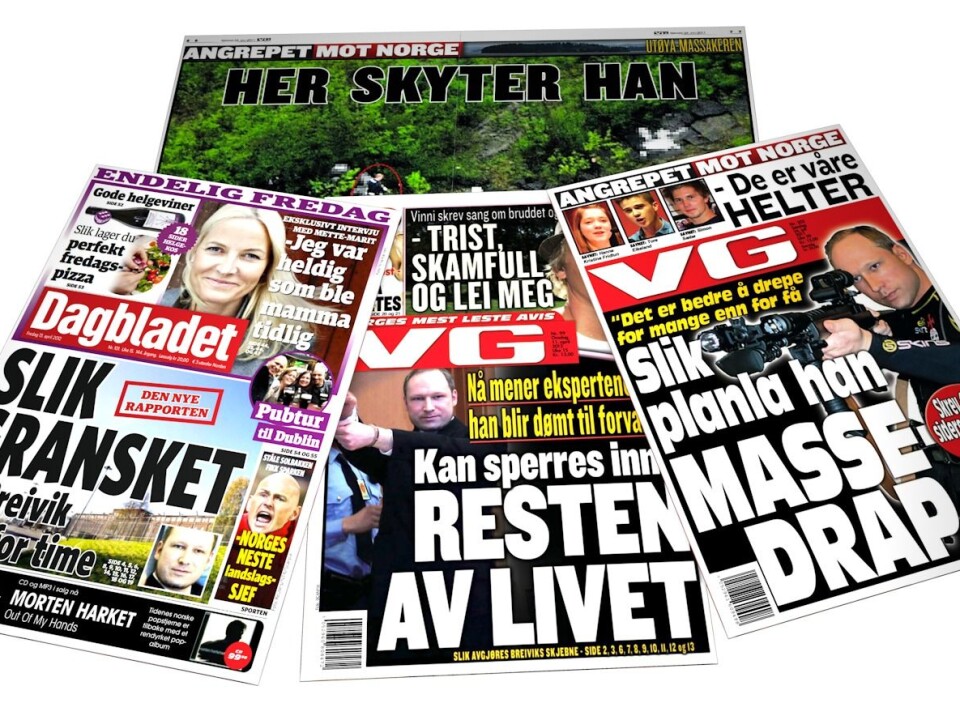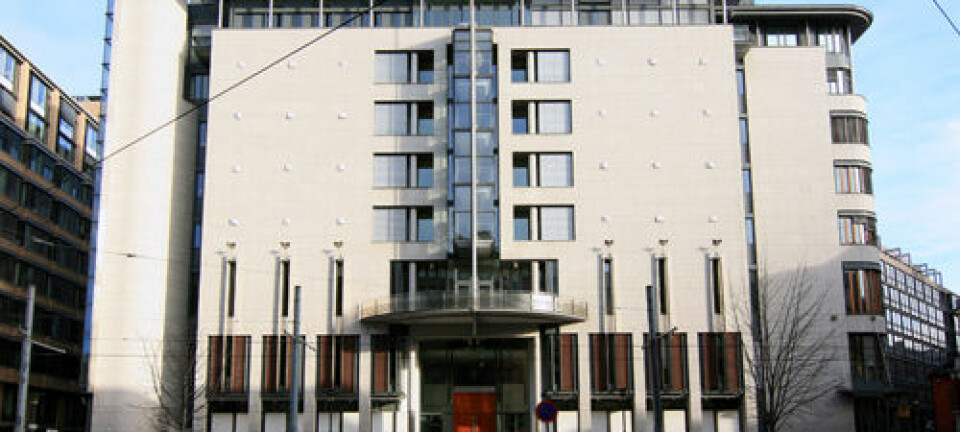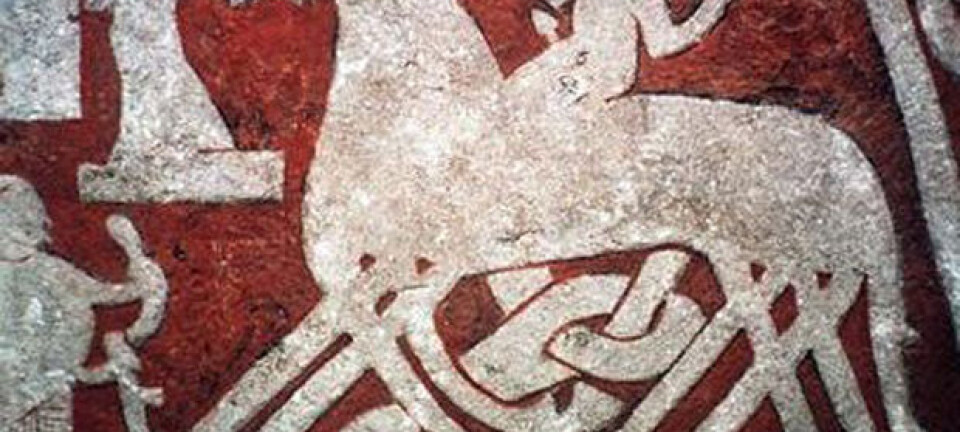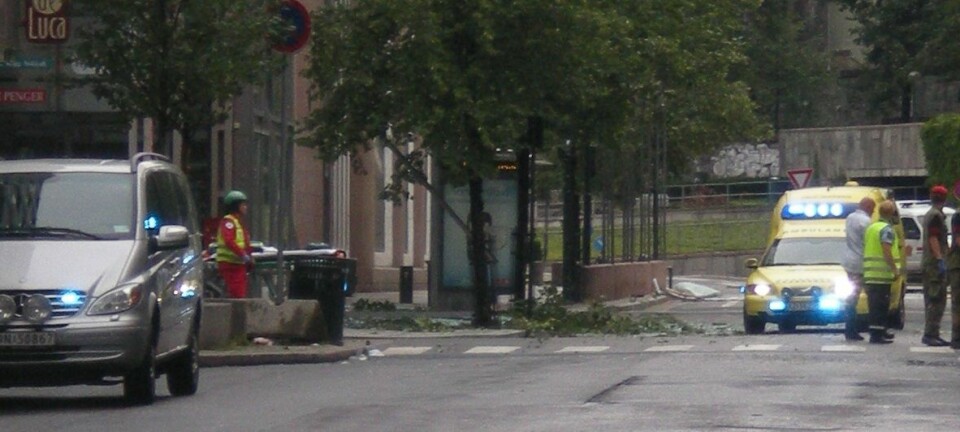
Researching media coverage of Breivik trial
Researcher Lars Arve Røssland is charting the media’s coverage of the ongoing trial in Oslo of the right-wing extremist who killed 77 persons last summer. “This trial differs from anything the Norwegian media has ever encountered,” he says.
Denne artikkelen er over ti år gammel og kan inneholde utdatert informasjon.
Never before has a court case in Norway been as comprehensively covered and distributed through so many media outlets as the trial of mass murderer Anders Behring Breivik.
“Considering my goal of grasping all the developments and tendencies in journalism and media coverage, it would be useless to try and wait until the trial ends,” says researcher Lars Arve Røssland.
“This is especially necessary regarding everything online, both the journalistically edited material and exchanges that go unedited through social media.”
From what ScienceNordic can gather, Røssland is the only researcher studying the media coverage continually while the case is still being heard.

The trial is scheduled to run until the latter half of June.
The internet displaces traditional media
Røssland is collecting screen dumps of web pages, op-ed pieces, expert statements, presentation forms, tweets, lists of people who are being interviewed and much more.
He’s a seasoned media researcher affiliated with the University of Bergen. His PC is constantly switched on in his office at the Department of Information and Media Studies.
His desk is overflowing with stacks of documents. Newspapers running numerous pages of copy about the Breivik case are piling up too.

“The coverage is massive," he says. "Generally we’re witnessing a rapid turnover and updating − everything that happens generates immediate comments.”
Røssland points out that the web’s contrast to newspaper coverage is huge and the mass of information on the internet tends to outweigh and displace the traditional media.
“But it’s too early to reach any substantial conclusions about the media’s role and coverage.”
Røssland will focus on two aspects in his research:

1. Argumentation initiatives − including how the media legitimises its presence.
2. Categorising genre.
Analysing argumentation
The researcher refuses to be lured onto the media stage, where experts dish out their opinions left and right.
They comment on everything from Breivik’s movements in his chair to his choice of words, reactions and discussions with his lawyers.
Røssland says an army of experts are making pronouncements, the media’s own commentators are acting as pundits and journalists are right behind them.
“Meanwhile, ethical discussions and decisions are popping up on the internet much more rapidly than in the traditional media.”
He believes the role of the media is clearer in common criminal proceedings:
“Then the presence of the media in the court is legitimised by being critical of the prosecution, to the evidence, acting as a watchdog ensuring the justice system is working properly,” he explains.
“That’s the key issue in many criminal trials: has the defendant really committed the crime? In the case against Breivik this issue is undisputed; it’s primarily a matter of whether he was and is of sound mind.”
In the 22/7 case − the date of the car bombing in Oslo and the massacre at Utøya − the defendant is a mass murderer who has taken the lives of 77 persons. He readily admits to it and nobody disputes that he was the sole perpetrator.
Where to set the limits?
The case is unique in its scale and horror.
“This differs from all other trials the Norwegian media has covered here at home. This is a historic and important trial,” he says, adding that historical documentation partly has to play second fiddle to the interests of the victims.
He reckons this is a problem:
“You have a dilemma when the media wants to document history, while also having to practice self-censorship, and the question of where to draw the line between the details that should and should not be included.”
Røssland thinks the distinctions are vague and that the media would be best served by sharpening the definition of its role in this context.
The court’s and the people’s needs
There were no live TV or radio broadcasts from within the courtroom in the first days. This was criticised from several sides, including the Association of Norwegian Editors, who argued that the since the case is of enormous public interest, Breivik’s testimony should be broadcasted.
The media researcher thinks this should have been problematised more.
“It’s said to be vital for the public to hear Breivik's testimony, but we don’t have public tribunals in this country.
“The need for the general media consumer to evaluate his sanity is not the same as the court’s need. In any case, every word Breivik says can be read on the web.”
Giving the murderer a propaganda platform
The editors argued for openness and stress the unique scope and historical significance of the trial.
“It could also be legitimate for media to act on the fact that this is a mass murderer with an ideology to whom we don’t want to give a microphone,” says Røssland, reminding us that terrorists use their actions as a means of spreading their message.
Røssland wonders whether the Norwegian media rushed to judgement in its evaluations of whether or not to give Breivik a public voice.
“So on the one hand we can say it’s the media’s role to cover the proceedings in court. We see commentators who assert this,” says Røssland.
“On the other hand, the media isn’t outside society. We’ve heard that international commentators think Norwegians are rather naive.
“One of the things the media has pointed out is that Breivik was not only allowed to read from a prepared manuscript; it’s claimed that he asked for 30 minutes to do so but was allotted 70 minutes.”
------------------
Read this article in Norwegian at forskning.no
Translated by: Glenn Ostling

































